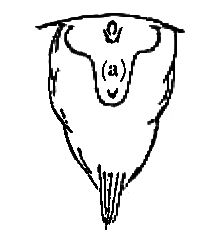To C. S. Bate 18 August [1851]
Down, Farnborough. Kent.
Aug 18th.
My dear Sir.
On my return home after 10 days absence I found your last obliging present of the larvæ,1 & your note had been lying here, & I have since been unwell & much engaged, which must plead my excuse for not having sooner answered your note. I have this morning carefully looked with my 18 glass at the larvæ (& beautiful specimens they are) but I cannot see the transverse articulation referred to.2 I observe that the carapace is often ruptured at the two corners in the line in question, & hence there would probably be a tendency for a fold to be then formed— I certainly do not believe in an articulation3 I send the more important synonyms as far as I have made them out, but I am not a good person to apply to, for I think the number of synonyms often given in works of Nat. History a downright evil & to be avoided— In cirripedia it is impossible in most cases to know what species are referred to in the short published descriptions— I feel pretty certain of the few given. With respect to Chthamalus, I cannot help you for I have not yet worked out the genus—4 I believe the British Species has been named by Italian Naturalists— If you call it the B. punctatus of Montagu5 & not the B. balanoides—I should think would suffice.
Smith & Beck of 6 Colman St City, assure me that the Asphalte which they sell in 1s bottles is better than Gold size for the purpose, I mentioned to you,6 I have got a bottle but have not yet tried it.

I see in the probosciformed mouth of the larva, apparently within it small tubular (a) organ; this would be worth your looking after, if you can get a laterally crushed specimen so that the proboscis projects.
With respect to Ellis’ Paper as it is before Binomial system—I have not troubled myself about it, as I follow Rules of Brit Assoc:7
Pray believe me | My dear Sir. | Yours sincerely. | C. Darwin.
Please cite as “DCP-LETT-1345,” in Ɛpsilon: The Charles Darwin Collection accessed on